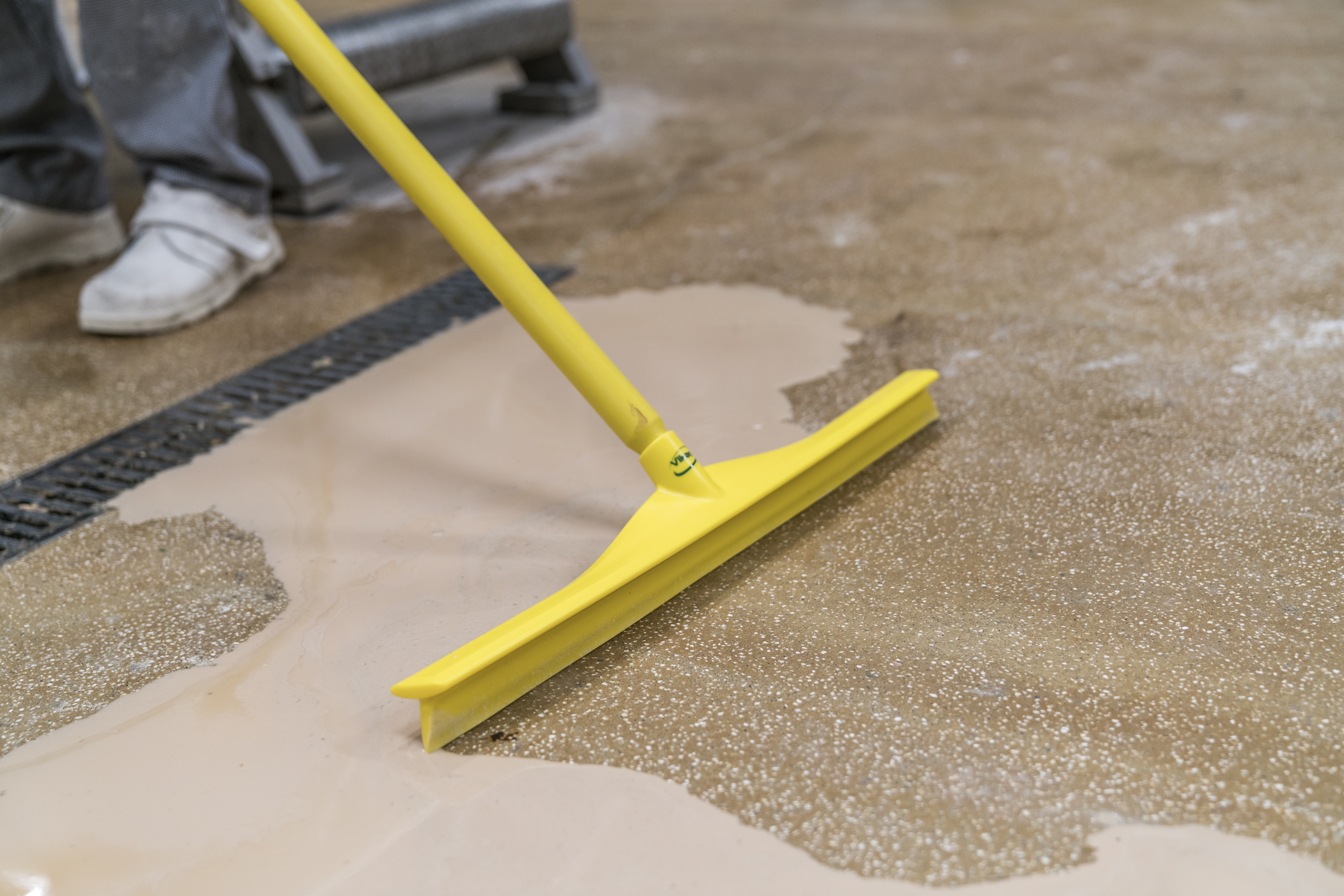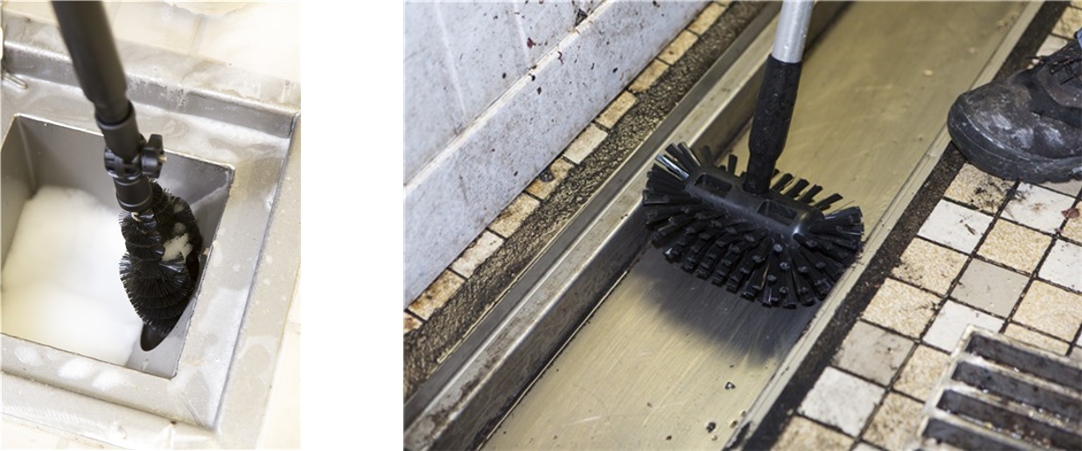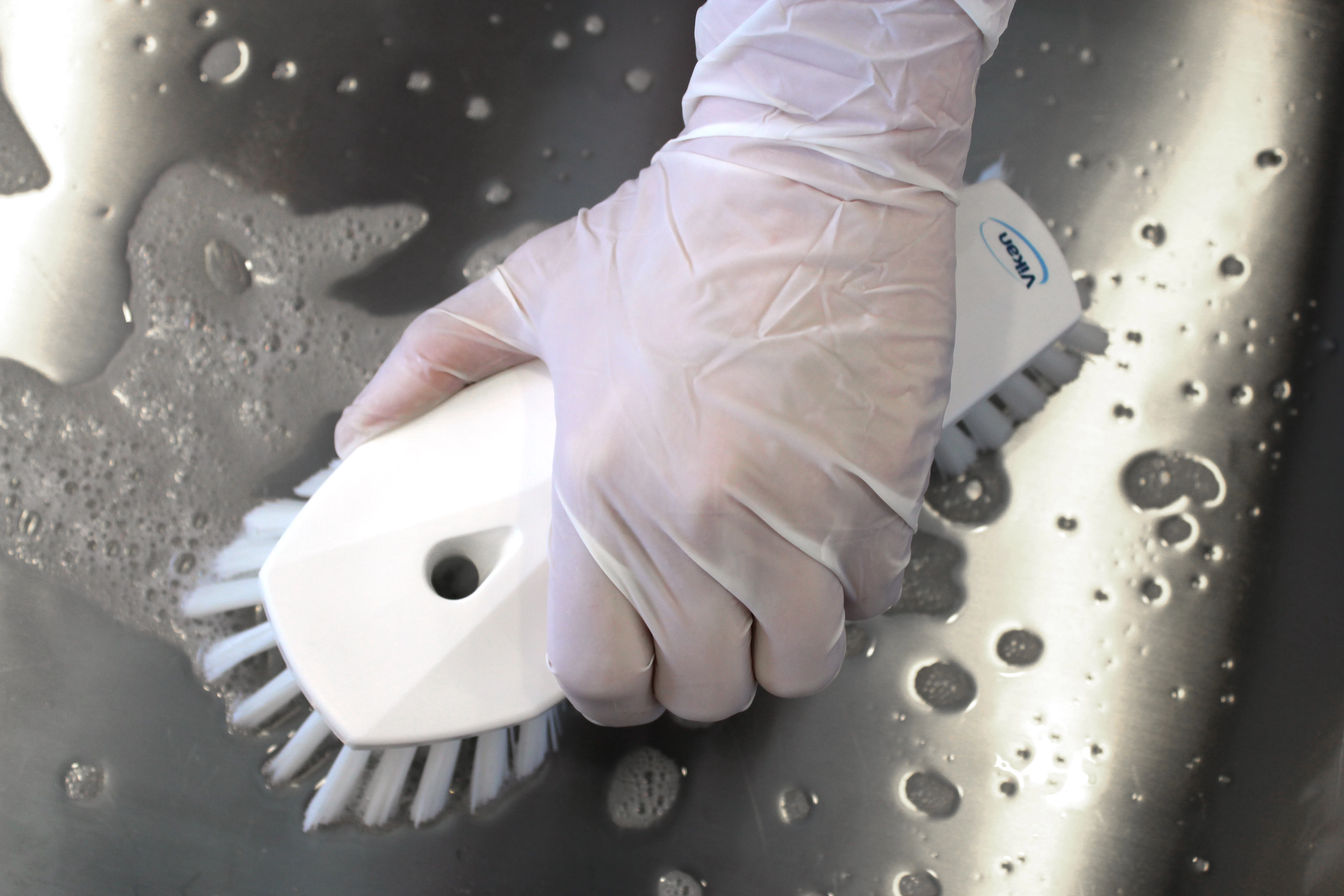Listeria, its most common hideouts, and where to clean
Listeria is a common bacterium that thrives in various environments. Once it establishes itself in a food production facility, certain strains can be extremely hard to eliminate. This article explores the most typical hiding spots for Listeria and offers practical tips on how to effectively manage its presence in your food production environment.
Listeria – an overview
Listeria bacteria are widespread in nature and can be found in soil, water, sewage, animal intestines, feces, and on raw foods. Among the many species, only Listeria monocytogenes is known to cause listeriosis in humans. People usually contract this illness by consuming contaminated ready-to-eat foods like salads, fruits, vegetables, deli meats, smoked fish, cooked shellfish, sushi, raw milk, unpasteurized cheese, and ice cream.
While infections are rare, listeriosis is one of the most severe foodborne diseases. It poses a high risk for pregnant women, newborns, elderly individuals, and those with weakened immune systems. Symptoms can range from mild flu-like conditions to serious complications such as sepsis and meningitis.
Each year, around 2,200 people in Europe and 1,600 in the United States get infected with listeriosis. Most require hospitalization, and about 20% of cases result in death. As a result, strict regulations are in place in both the EU and the US to control Listeria in ready-to-eat foods and products intended for vulnerable groups.
When to be concerned about Listeria?
Since Listeria is prevalent in the environment and often present in soil, water, and on raw foods, it can easily enter and spread throughout food processing facilities. The bacteria can form biofilms that help them stick to surfaces like floors, drains, and equipment, making them more resistant to cleaning and disinfection. These biofilms are a major source of cross-contamination in food production.
Additionally, Listeria can grow at low temperatures and survive freezing. This means even refrigerated or frozen foods are not entirely safe. Chilled environments used in ready-to-eat food processing provide ideal conditions for Listeria growth, so vigilance is essential if you produce such products.
Listeria hideouts and control in food production facilities
1. Floors and Drains
Floors
Floors made of unsuitable materials or improperly installed can lead to standing water, which creates perfect conditions for Listeria colonization. Poorly sealed joints between walls and floors, or damaged areas like cracks and gaps, can trap moisture and encourage bacterial growth. Therefore, choosing, installing, and maintaining the right flooring is crucial for Listeria control.
To reduce the spread of Listeria, keep floors as dry as possible. Limit water use during cleaning and processing, and ensure any spills are removed immediately. Fix leaks quickly and make sure floors slope toward drains to aid water removal and prevent standing water.
Segregate high-risk areas from low-risk ones to prevent the spread of Listeria through water, aerosols, and movement of people and equipment. Use dedicated footwear for each area and avoid placing food contact equipment directly on the floor. If equipment falls on the floor, clean it thoroughly before reuse.

Drains
Drains are often the main sources of Listeria contamination in food production facilities. They collect water and organic matter, providing ideal conditions for bacterial growth. Cleaning drains is a challenging but essential task for controlling Listeria. Dirty drains can lead to contamination, and flooded drains may spread the bacteria across the floor.
Clean drains during non-production hours when possible, and allow aerosols to settle before rinsing and disinfecting food contact surfaces. Ensure your drainage system is designed to minimize standing water and backups. Hygienically designed drainage systems are easier to maintain and reduce microbial growth risks.

How to avoid Listeria contamination from floors and drains
Listeria can move from contaminated floors and drains to OTHER areas via footwear, equipment, trolleys, and cleaning tools. To prevent this, clean and disinfect these areas regularly. Avoid using high-pressure hoses or mechanical scrubbing, as they can aerosolize the bacteria and spread it to other parts of the facility.
Use color-coded, dedicated cleaning tools for different areas—such as floors, drains, and food contact surfaces—to minimize cross-contamination. Always clean from clean to dirty zones to prevent spreading contaminants.
2. Processing Equipment
Processing equipment with hard-to-clean areas can accumulate water and become breeding grounds for Listeria. Use hygienically designed equipment that’s easy to clean and made from food-safe materials. For ready-to-eat foods, daily cleaning and disinfection are necessary, along with regular deep cleaning to reach inaccessible areas.
Pay attention to hidden spots like poorly drained frameworks, hollow rollers, and spaces inside slicing machines. Compressed air lines and lubricants can also be potential sources of contamination, so check and replace them regularly.
3. Cleaning Equipment
Cleaning tools can be a major source of Listeria contamination. Surveys have shown that up to 47% of cleaning equipment in food processing areas test positive for Listeria. To prevent this, choose tools with good hygienic design and maintain them properly.
Hygienic design features include smooth surfaces, one-piece construction, and no crevices. Tools should be easy to clean and store. Read more about the hygienic design of cleaning tools here:
UST White Paper
In addition to using hygienically designed tools, proper maintenance is key. Clean, disinfect, and replace tools regularly after use. Store them on wall brackets or shadow boards. Color-coding is essential to distinguish between tools used for floors, drains, and food contact surfaces.
Please see the Vikan white papers for more information:
Cleaning Tool Maintenance White PaperColor Coding White Paper
4. Chillers, Freezers, and Air-Handling Systems
As mentioned earlier, Listeria can survive at very low temperatures, even below -5°C. Chillers and freezers are cold and wet, creating ideal conditions for Listeria to thrive. Regular cleaning and disinfection of evaporator plates and fans are essential.
Condensate from cooling systems should be directed to drains or drip pans, which need to be emptied, cleaned, and disinfected regularly. Never let products pass under cooling or freezing units. Similarly, air-handling systems should be kept clean to prevent condensation and water buildup.
Where to find more information
For more details on hygienic cleaning tools and their maintenance, visit:
Hygienically designed cleaning toolsCleaning tool maintenance
The European Hygienic Engineering Design Group (EHEDG) provides valuable guidelines for hygienic design in food manufacturing. Key resources include:
- EHEDG Guideline No. 8 – Hygienic equipment design criteria
- EHEDG Guideline No. 23 – Use of food-grade lubricants
- EHEDG Guideline No. 32 – Materials of construction for equipment in contact with food
- EHEDG Guideline No. 43 – Hygienic design principles for food factories
I hope this article has given you a clearer understanding of where Listeria tends to hide and how to effectively manage its presence in your facility. By focusing on high-risk areas and maintaining strict hygiene practices, you can significantly reduce the risk of contamination in your ready-to-eat food products.
Recent blog posts

Cleaning equipment and its importance in the control of Listeria in food production
Get valuable insights from Dr. Phil Voysey on where to look for Listeria in a food production environment and how to prevent cleaning tools from causing cross-contamination. Learn more about Listeria and read Dr. Phil's full interview.

Maximize Global Food Safety Scheme compliance
Discover what Global Food Safety Schemes, including BRC, FSSC 22000, and SQF, say about cleaning tool selection, use, and maintenance. Learn how to optimize your cleaning tool audit performance and meet compliance requirements.
multi-color lip balm.Fade lip line lip balm,Anti-peel lip balm,Moisturizing lip balm before bed,Fade lip lines
Guangzhou Boxuanya Cosmetics Co.Ltd. , https://www.cosmeticsbxy.com